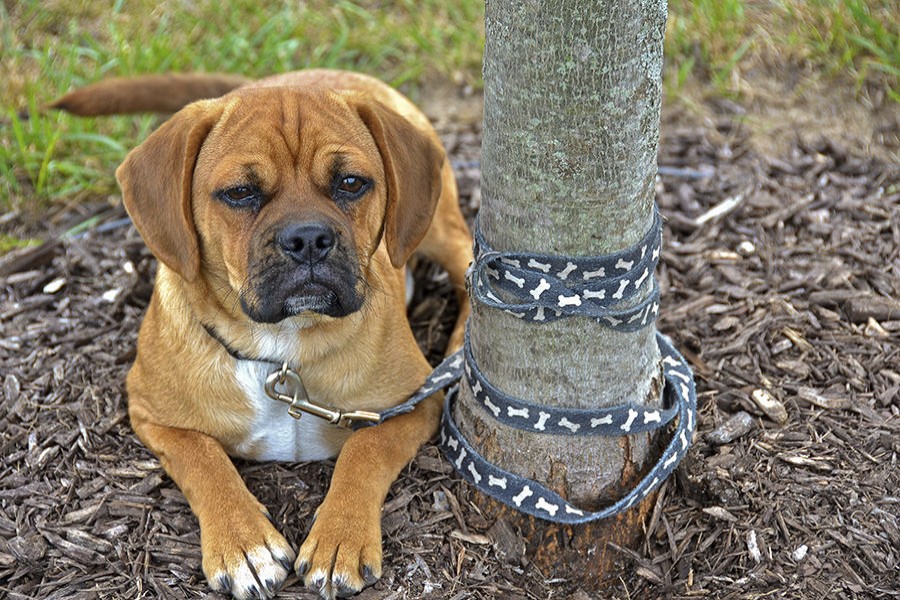It took thousands of years after humans started hunting and eating animal meat before they could learn how to tame some animals. This strange love for wild animals later developed into a compulsive passion, ending in an everlasting bond between the two species. Prompted by a reflex, animals, too, reciprocated the human gesture of kindness towards them. Dogs, cats, horses and elephants became enslaved to their human masters; many never left them. Their last-ditch battle to rescue their masters from dangers has found place in fables and history.
Though it sounds unsavoury, the human species later found a distinctive trait latent in it --- cruelty. Beasts become angry and ferocious, but they do not nurture cruelty. The first phase of early man's cruelty was targeted not at fellow humans; it was the poor pet animals who received the heat. This cruelty was evident as man learnt how to get fun out of the various types of behaviours animals resorted to while in captivity. Human history is replete with tales of man-animal bond of love, and also of man's perverse pleasure gained from forcing animals into demonstrating physical tricks upon his or her master's command.
Much before the advent of circuses, pet and trained animals would be viewed as an easy source of public entertainment. Dogs, monkeys and pigeons were some common animals doing physical feats in public places like city esplanades and fairs. Those were also interspersed with cruel funs like provoking two specially trained cocks to engage in a fierce fight. These fights most often resulted in the bloodied death of the weaker cock. The later-day circuses did not have provisions for animal-animal or man-animal fights.
Side by side with the glob-totting Russian and Chinese circuses, the American troupes have also been able to raise a sizeable number of fans. It occurred in the last one and half centuries. The circus troupes in the South Asian sub-continent have not lagged behind. The pre-partition Indian circuses were pageant-filled, characterised by breathtaking acrobatics and mindboggling feats by trained animals. Once upon a time, circuses ran parallel to 'jatras' (rural operetta) in terms of popularity in the undivided Bengal region. Komola Circus enjoyed its heyday in the 19th-20th centuries, with the audiences found glued to the performance of dancer Komola Sundori.
Thanks to the pressure of animal rights groups as well as cut in the number of admirers, especially the youths, circus parties around the world are mulling closures. The party that has already wound up in the US is the largest of these troupes -- Ringling Bros and Barnum & Bailey.
The closure of the 146-year-old American circus hit the global headline which it aptly deserved. Comprising 500 performers and animals, the shutting down of the troupe threw the careers of its scores of employees in jeopardy. Without having the outlet to show their antics and stunts, the circus animals in general now have no relevance to human society. Ironically, the rights activists are found oblivious to this orphaned state of the animals. Compared to their stance on animal protection, they appear less vocal on the wandering circus attractions.
Making animals and their feats a source of awe and fun is not an ancient practice. The world's first-ever show of a touring circus is believed to have taken place in a city in Mexico in the 19th century. The popularity of circus had kept growing in the Western world since its early days. Even movies made with circus animals, clowns and the trainers became box office hits. Here one would like to mention The Greatest Show on Earth, one of the all-time Hollywood hits, made in 1952. Produced and directed by Cecil B DeMille, the film's cast included a few superstars of the time apart from 1400 people and hundreds of animals. The movie was shot using the real life location of the circus troupe Ringling Bros. The movie won two Oscars, and several Golden Globes.
The tradition of this massive entertainment in India dates back to the late 19th century. Circus was widely recognised as a clean session of performance by trained humans and animals until it fell on hard times in the mid-20th century. The open-air circuses used to be held under large tents, mostly in winter. Besides the fast decline in the viewers' turnout, circus troupes faced stiff competitions from modern entertainments like cinema. By the start of the 21st century, circus has become an entertainment of the bygone days.
The plight of circuses is largely blamed on their failure to stand up to the smarter entertainment outlets like those availed online. In the 2017 Bangladesh, one cannot expect people, even in villages, to go to a far-away area to enjoy a circus show. Many of them in the urban areas have their all-purpose smart phones, tablets, etc.
The richness of source and varieties available with today's electronic gadgets is amazing. Scores of villages with electricity connections have televisions linked to dish channels. Watching animals moving in jungles and those in captivity is no tall order these days, as channels like National Geographic and Animal Kingdom broadcast animal-based programmes day and night. Still the physical experience of enjoying a circus performance cannot be compared to that coming from the TV screen. The secret lies with the very animals.
Meanwhile, the activists campaigning to stop cruelties to animals now propose the new-age circus -- free of animals. Interestingly, few felt the slightest pricks of conscience when horses and elephants died in their hundreds in the battlefields of the past.


